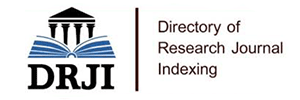
Journal Basic Info
**Impact Factor calculated based on Google Scholar Citations. Please contact us for any more details.Major Scope
- Thoracic Oncology
- Immunology
- Gastrointestinal Cancer
- Colorectal Cancer
- Endometrial Cancer
- Pancreatic Cancer
- Targeted Therapy
- Blood Cancer
Abstract
Citation: Clin Oncol. 2022;7(1):1909.DOI: 10.25107/2474-1663.1909
Clinical Analysis of High Risk Factors and Pregnancy Outcomes of Different Types of Placenta Previa
Kwong Zhirui, Wang Rui, Guan Jianming, Li Shaohua and Ye Yanzhen
Department of Obstetrics and Gynecology, People's Hospital of Nanhai District, China
*Correspondance to: Ye Yanzhen
PDF Full Text Research Article | Open Access
Abstract:
Objective: To investigate the effect of different types of placenta previa on maternal pregnancy outcomes.
Methods: From January 2018 to January 2021, more than 100 pregnant and lying-in women who underwent obstetrics and gynecology examination in our hospital from January 2018 to January 2021 were selected retrospectively, and they were divided into complete placenta previa group (n=45), marginal Sexual placenta previa group (n=33), partial placenta previa group (n=5) and
normal group (n=40) followed by statistical analysis to explore the high risk factors of placenta previa in puerperae, to evaluate the pregnancy outcomes and pregnancy outcomes of the four groups of puerperae, and its neonatal outcomes.
Results: Our results indicated that there were statistically significant differences in pregnancy times, gestational termination weeks, and the proportion of multiparous women among the three groups of high-risk factors for placenta previa (P<0.05). Moreover, the parameters i.e., antepartum hemorrhage, cesarean section history, intraoperative blood loss, placental adhesion, placenta accreta, total length of hospital stay, and antenatal anemia also exhibited significant differences (P<0.01) among the three groups. Neonatal weight and preterm birth rate among the three groups were statistically significant (P<0.01), but no significant difference was found between 1-min and 5-min Apgar (P>0.05).
Conclusion: Our study suggested that pregnant women's gestational times, gestational termination weeks, and multiparous history are all high-risk factors for placenta previa. While gestational age, parity, and history of uterine cavity operations are also important factors for placenta previa. However, gestational age of the admitted mothers and the proportion of the history of uterine cavity operation exhibited no significant difference between the groups under this factor. Thus suggesting that different types of placenta previa cause significant differences in pregnancy outcomes and neonatal outcomes. Therefore, different intervention measures should be taken for different types of placenta previa and its complications. Collectively suggesting that complete placenta previa group has a poor outcome, therefore, further comprehensive design of clinical study is a prerequisite.
Keywords:
Placenta previa; High risk factors; Antepartum hemorrhage; Pregnancy outcome
Cite the Article:
Zhirui K, Rui W, Jianming G, Shaohua L, Yanzhen Y. Clinical Analysis of High Risk Factors and Pregnancy Outcomes of Different Types of Placenta Previa. Clin Oncol. 2022;7:1909..













